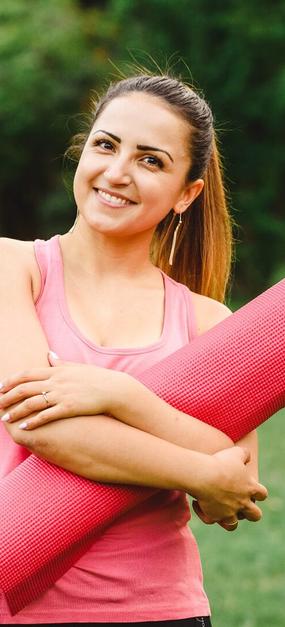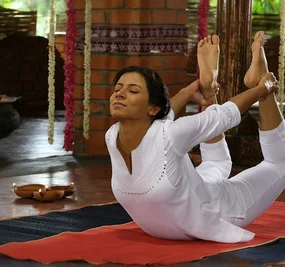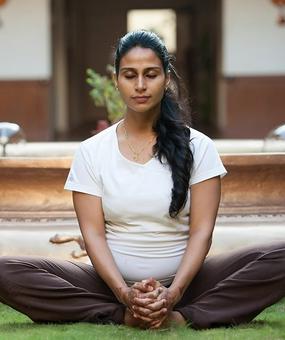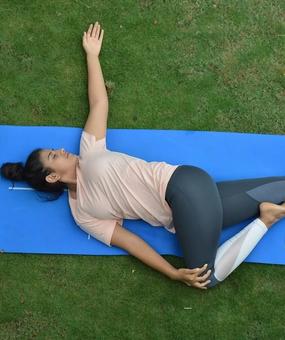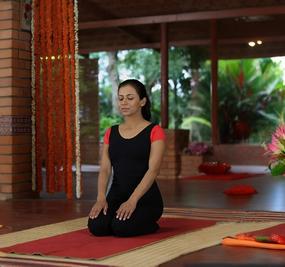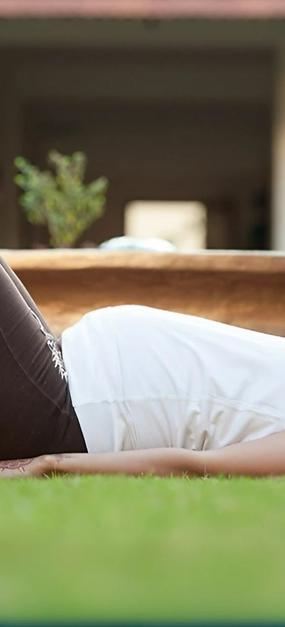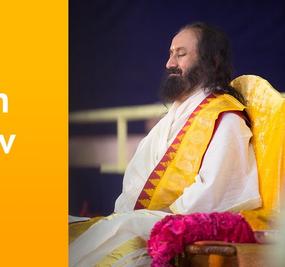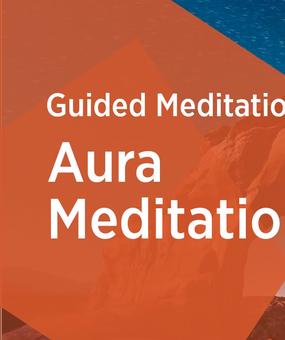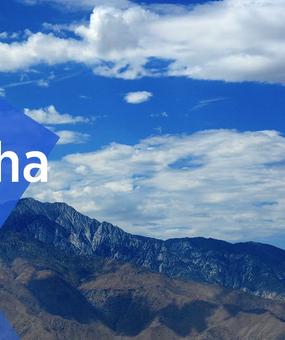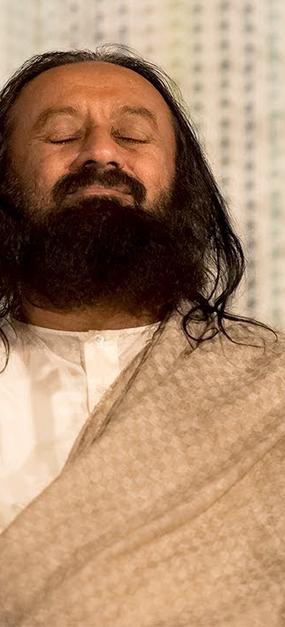The earliest interactions of human beings have been with nature and the living creatures in it – the birds and the bees, animals, and insects, reptiles and amphibians. It is from watching them in action and motion that we have been most influenced. It is no wonder, then, that there are so many asanas or poses based on the stretches and twists, flexes and poses of animals.
Let’s take a look at the different animal yoga poses that are popular among yoga aficionados.
Top animal yoga poses
1. Fish pose (Matsyasana)
If you perform this asana in water, you will be able to float on water – just like a fish! Hence the name!
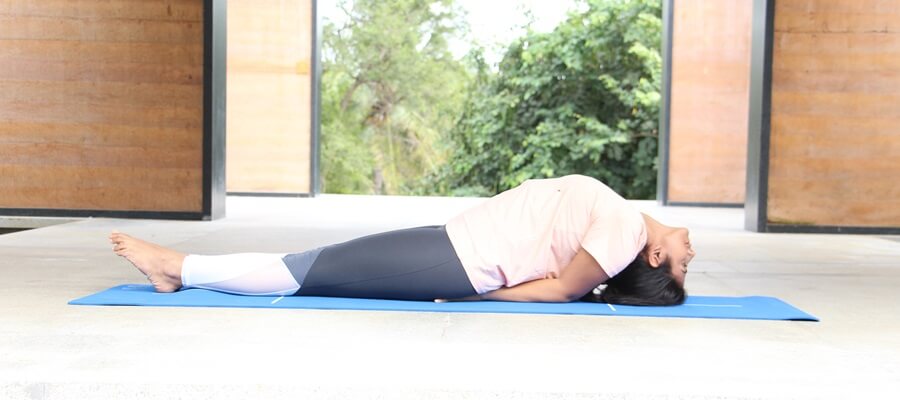
Benefits of fish pose
- This complete yoga pose helps relieve menstrual pain by stimulating the abdominal muscles and increasing the flow of blood to the pelvic region. So, it is a good animal yoga pose for women.
- It also helps relieve constipation.
- This asana helps stretch your spinal cord and hips, so it is effective in combating fatigue.
- Additionally, it relieves tension and stiffness in your neck and shoulders.
2. Locust pose (Shalabasana)
Locusts are grasshoppers. When you are in Locust posture or (Shalabasana), you will resemble the stance of a grasshopper, hence the name. While it looks simple enough, it can be quite challenging, especially if you try to maintain the pose for a while. But, once you do, the benefits are many.
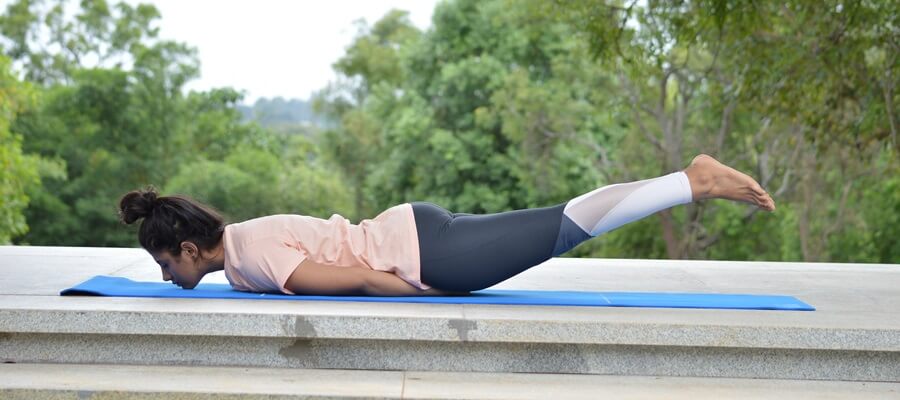
- Benefits of locust pose:
- Strengthens the muscles of the spine, root, and backs of the arms and legs.
- Stimulates the abdominal organs.
- Relieves stress.
3. Cobra pose (Bhujangasana)
The pose looks like a cobra with its hood raised, hence the name. You can descend into this pose from the downward-facing dog pose. It is one of the steps of the surya namaskar.
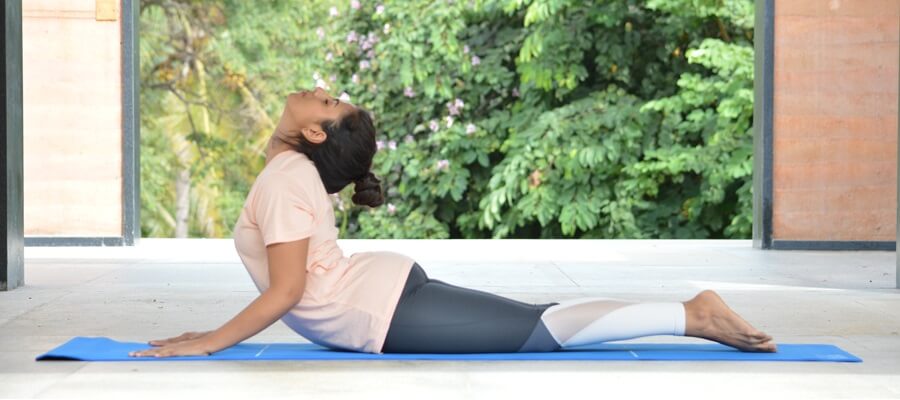
Benefits of cobra pose:
- This animal yoga pose provides relief to the back as it strengthens the spine.
- In particular, it strengthens the lower back. So, it is great for athletes and those who do a lot of physical work because excessive physical activity strains the lower back.
4. Butterfly pose (Badhakonasana)
Do your thighs ache? Would you like to stretch those groin muscles?
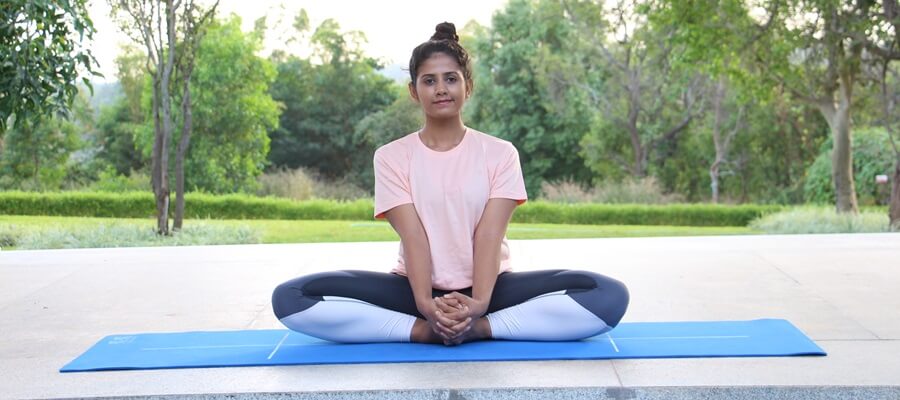
Benefits of butterfly pose (Badhakonasana):
- This animal yoga pose is great for those who are on their feet a lot. It relieves people of their fatigue.
- It helps women as it reduces menstrual discomfort and menopause symptoms.
5. Dolphin plank pose (Makara Adho Mukha Svanasana)
Benefits of dolphin plank pose (Makara Adho Mukha Svanasana):
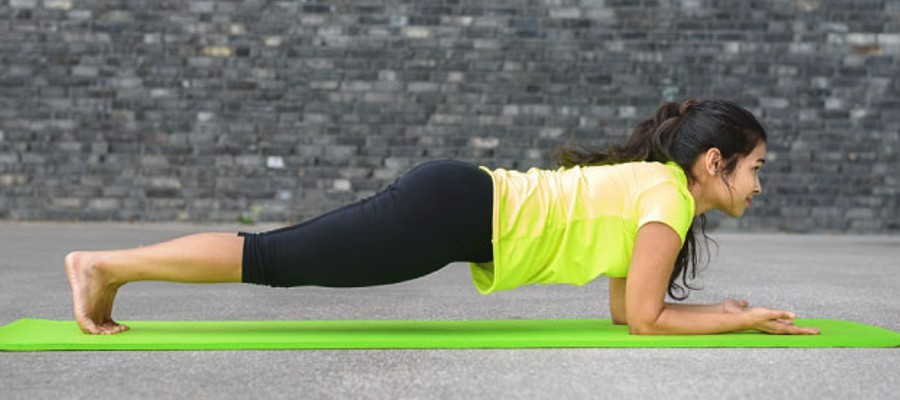
- This animal yoga pose is part of core-building exercises that sportspersons include in their exercise regimen. This asana is suitable for men, women, and children.
- It strengthens the arms, legs, abdomen, chest, and lower back.
- It helps in improving posture as it straightens the spine.
6. A. Downward-facing dog pose (Adho Mukha Svanasana)
Benefits of downward-facing dog pose:
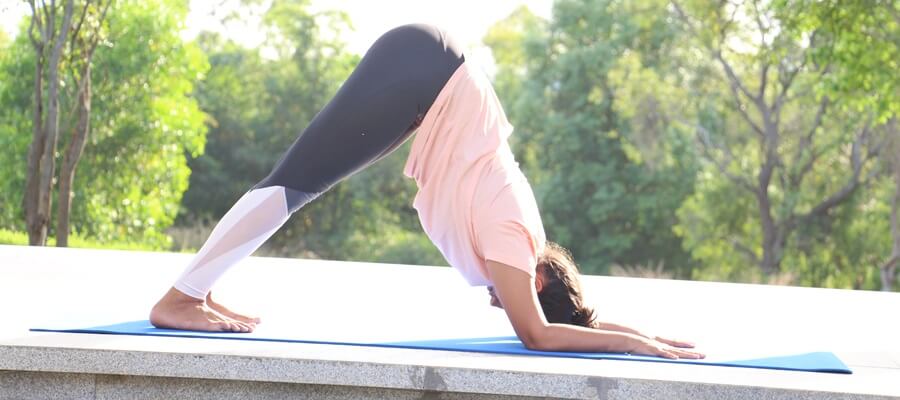
- Man’s best friend can teach us a thing or two more than loyalty and friendship! This pose that looks like a dog stretching on its four paws greatly relieves stress, especially from the back.
- This animal yoga pose is a great posture for everyone because it provides an all-round exercise to the body, strengthening the shoulders, back, hips, calves, and heels.
6. B. Upward facing dog pose (Urdhva Mukha Svanasana)
This is very similar to the Cobra Pose and is sometimes done as part of surya namaskar also.
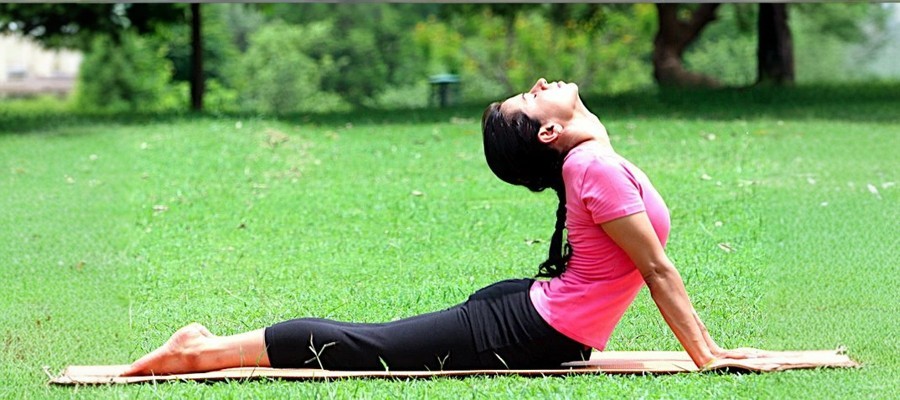
Variation of the dog pose
- Start in downward-facing dog pose.
- Release the stretch and bring your knees down to the floor.
- Inhale as you lift your right knee bent slightly up to the side. Bring it down as you exhale.
- Again, inhale and move on to the left leg. Exhale and bring it down.
- Repeat 6-7 times and relax.
Benefits: This animal yoga pose opens up and strengthens the hips and groin area.
7. Cat stretch (Marjariasana)
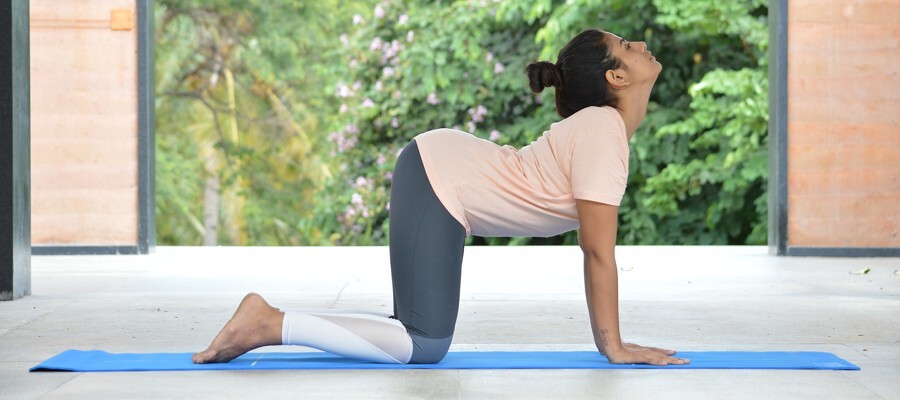
This animal yoga pose is a good warm-up pose. So, you can start with it before you move on to more rigorous asanas. If you’ve ever observed a cat, the upward stretch and well-rounded bend look exactly as a cat would do it! Hence the name.
Benefits of cat stretch:
- It helps increase flexibility to the spine.
- It encourages correct postural alignment.
- It also stimulates the abdominal organs.
8. Cow face pose (Gomukhasana)
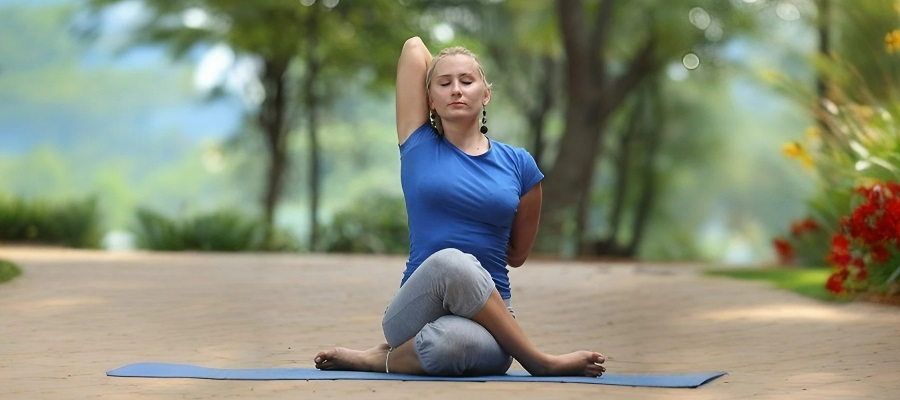
This animal yoga pose, in totality, gives you the image of the face of the cow. How? Just imagine the arms are like the ears, the torso like the nose, and the crossed legs like the mouth of the cow. Can you see it now?! The cow pose improves the flexibility and movement of various body parts.
Benefits of cow face pose:
- It straightens and lengthens the spine, correcting your posture. This is useful for both men and women.
- It creates a sense of balance between your left and right side!
9. Eagle pose (Garudasana)
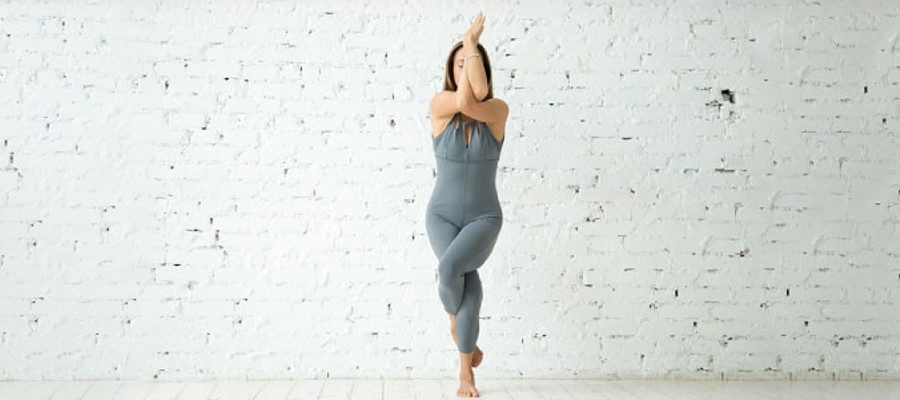
Benefits of eagle pose:
Do this pose often enough and you won’t be able to help having a sense of balance! After all, you are on one leg! The pose, in totality, is asymmetric which makes you concentrate all your energies in one direction. This animal yoga pose will be an interesting challenge for children.
10. One-legged pigeon pose (Eka Pada Raja Kapotasana)
When you look at this animal yoga pose, you can easily envision a sitting pigeon! Hence the name.
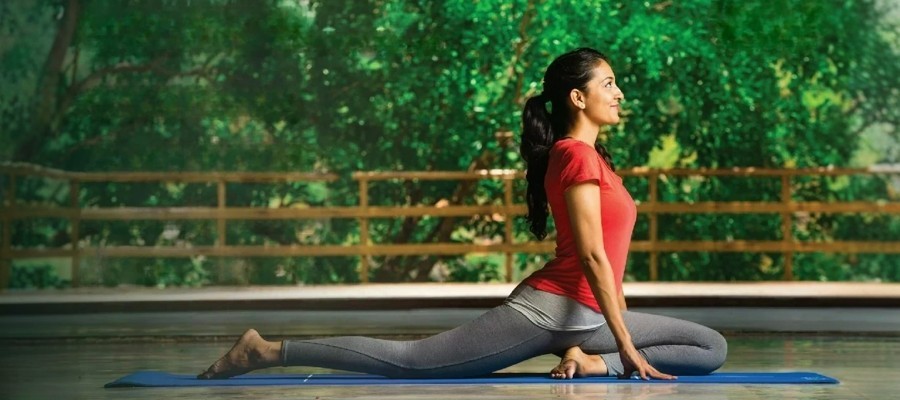
Benefits of one-legged pigeon pose (Eka Pada Raja Kapotasana):
This pose is one of the ‘hip-openers’, as it helps flex and lengthen the hips. Sitting on a chair actually makes your hips shorter! This is the perfect counter exercise. So, if you have a sedentary desk job, this is a great exercise for you. However, work your way to the pose as it is more challenging than it looks.
11. Camel pose (Ustrasana)
The backbend in this animal yoga pose reminds one of a camel’s hump. Hence the name.
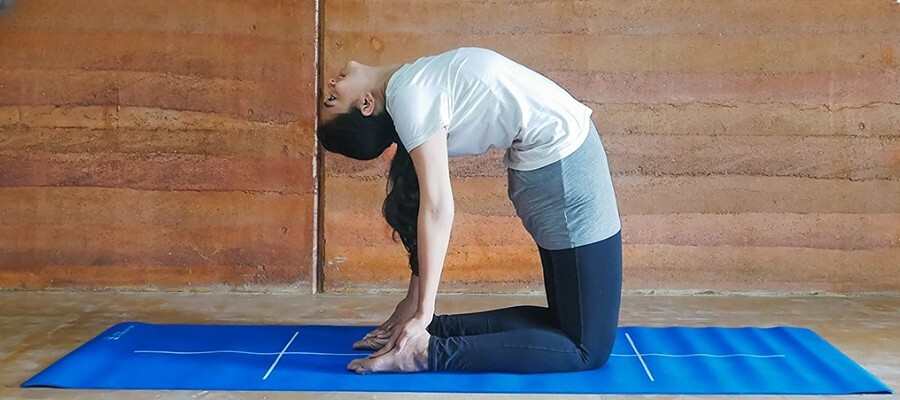
Benefits of camel pose:
- This pose opens the chest and shoulders.
- It improves flexibility of the spine and hence improves posture.
Variation of camel pose:
- Stand straight.
- Stretch your arms forward and place your hands one on top of the other.
- Move forward, bending your knees as you do.
- Bend your elbows as you move your hands in a circular motion towards you as you move.
- Feel the stretch in your hamstrings.
- Come back to the center.
You can try this same pose moving forward with your arms inclined downwards and your knees bent more – almost touching the ground.
Benefits: This builds your core muscles and makes you more flexible in the limbs.
12. Peacock pose (Mayurasana)
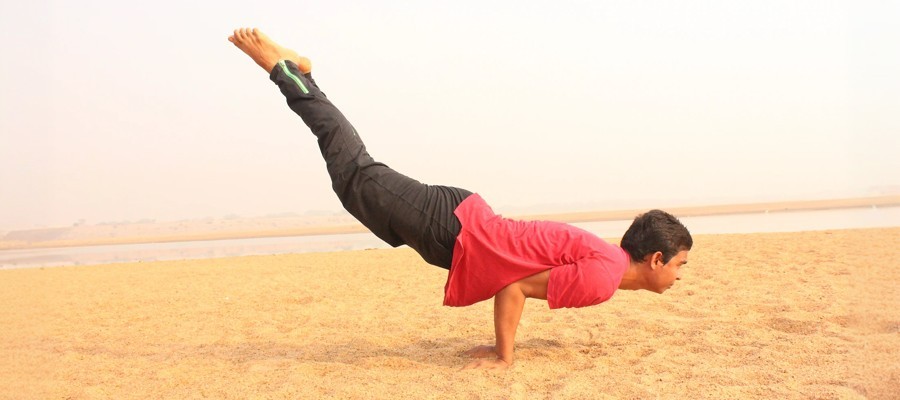
If you are a gymnast, this might not be too out of your routine! This animal yoga pose tests your balance, endurance, and stamina. You should try it only if you are an intermediate yoga practitioner.
Benefits of peacock pose:
- It strengthens the arms and shoulder muscles.
- It strengthens the abdomen.
- It aids in, both, physical and mental balance.
Another kind of peacock pose:
- Stand straight. Turn to your side.
- Interlock your hands behind you.
- Bend your head and knees as you move forward. Imagine you are a peacock pecking grain off the ground.
- Come back to the center and release.
Another variation of peacock pose:
- This time interlock your hands in front of you with your index fingers pointing downwards.
- Bend your head and knees well as you move forward. Again, imagine you are pecking grains off the ground.
- Come back to the center and relax.
Benefits: A great pose to amuse children though adults can enjoy it too! It flexes the neck and back muscles.
13. Monkey pose (Hanumanasana)
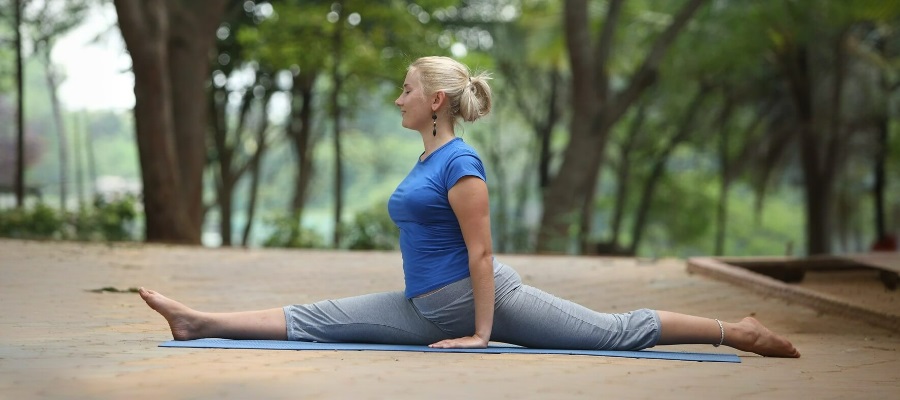
This animal yoga pose tests just how acrobatic you really are! Can you do a complete split? Some children can do it naturally. But you can slowly work your way towards this position with time and regular practice. Athletes will find this easier to do because of their practice.
Benefits of monkey pose: It stretches the thighs, abdomen, and groins and makes your hips more flexible.
Another kind of monkey pose:
- Stand straight and look forward. Lift your hands to your face level and clench your fists as if you are holding on to some branches.
- Bend your knees a little and look right, left, then right again.
- When you are looking right, jump to your left and when you are looking left, jump right. Like a playful monkey!
This animal yoga pose is ideal for children. It will have them in splits! Laughter is the best medicine, after all!
Benefits: It enables free movement of the neck and lateral movement of the limbs.
14. Scorpion pose (Vrischikasana)
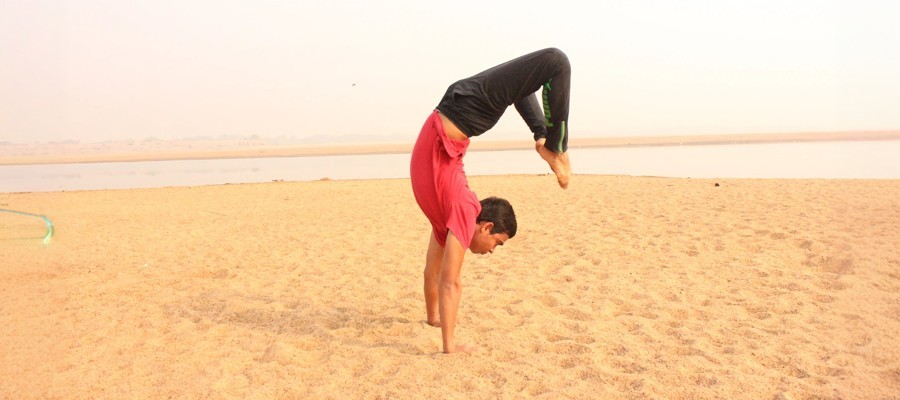
This animal yoga pose is a challenging one and should be done by those who are reasonably well-versed with yoga poses. Again, gymnasts will naturally adjust to the requirements of this pose but like everything else, the directed practice can make you flex like you never thought you could!
Benefits of scorpion pose: It strengthens the spine, arms, and shoulders, increases stamina and enhances the sense of balance.
15. Elephant pose
This animal yoga pose is great fun for children! But there is no harm in adults exploring the child in them and re-living a page out of their childhood!
- Stand straight and place your feet a little wide apart.
- Stretch your left hand towards the right and gently, hold your nose with your right hand.
- Now, bend forward and start swaying from side to side like an elephant. Your left hand swings like the trunk of an elephant.
- Make sure you keep the knees soft as you swing from side to side.
- Enjoy the stretch and slowly release the hands.
- Switch hands and repeat the process.
- Imagine you are a happy elephant!
- You can raise the heels if you need to.
Benefits of elephant pose: This pose will relax and flex the muscles in your neck and shoulders and the upper part of your body
Variation of the elephant pose:
- Now, turn to your side.
- Place your hands on the floor. Your ten fingers can be your balance.
- Keep the left hand in line with the left foot and right hand with the right foot.
- Move the left hand and left foot in co-ordination and the right hand and right foot -forward and backward. Like an elephant on the move.
Benefits: This pose will strengthen the arms and legs and increase the coordination and flexibility of the limbs.
Another variation of elephant pose:
- Come down to the cat stretch – knees on the floor below the hips and hands on the floor below the shoulders.
- Move your head to one side and hips to the other side. Like an animal surveying its surroundings.
Benefits: This will help loosen the muscles around your neck and hips and enable their free movement.
16. Rabbit pose
- Stand straight facing forward.
- Make the ears of the bunny rabbit with your open palms placed behind your ears.
- Bend a little and jump to the side.
- Shake your rear end, imagining you are shaking the rabbit’s tail in joy!
- Repeat 10-12 times.
Benefits of rabbit pose: This will help loosen your hips and strengthen your thighs as you jump. Not to mention the animal yoga pose is a whole lot of fun especially when you do it in a group!
17. Kangaroo pose
- Stand straight. Turn to your side.
- Keep your feet close together.
- Interlock your hands in front of you.
- Crouch down.
- Jump as far as you can.
- Turn around and jump again.
- Put all your effort to jump as far as you can while bending your knees.
- Come back to the center and relax.
Benefits of kangaroo pose: This animal yoga pose adds strength and flexibility to your thighs and legs. No wonder kangaroos have such strong lower limbs!
18. Horse pose
- Stand straight, turn to your side.
- Lift your hand with four fingers locked into your palm with a thumbs-up sign and bend your elbow.
- Standing on the same spot, lift your knees one by one, as fast as you can and as near as possible to your wrist.
- You can move back and forth on your yoga mat while doing this.
- Come back to the center and calm down.
Benefits of horse pose: This animal yoga pose strengthens the leg muscles, and improves coordination.
19. Frog pose
- Bend your knees, away from each other as you come down a little bit.
- Place your palms on the floor.
- Jump as far as you can
- Continue a few more times.
- Relax.
Benefits of frog pose: This animal yoga pose strengthens your wrist giving you better balance. It also opens your hips.
20. Donkey pose
- Place your hands and feet on the floor.
- Kick your legs back like a donkey.
- Push back. See how far you can lift your legs back.
Benefits of donkey pose: This will strengthen your arm muscles and improve your sense of balance as you leave the ground.
21. Crow pose
- Stand straight and turn to your side.
- Place your hands on your knees and crouch down.
- Start walking like a crow bringing your left knee to your right foot and right knee to your left foot. Walk confidently with a feeling of strength.
- Repeat up and down the mat a few times.
Benefits of crow pose: This animal yoga pose increases your ankle strength. It also improves your sense of balance and stamina
22. Lion pose (Simhasana)
- Sit in Vajrasana.
- Stick your tongue out. Take a deep breath in. As you exhale, roar like a lion.
- Repeat 4-5 times and then relax.
Benefits of lion pose: This animal yoga pose exercises the tongue, relaxes the neck muscles and prevents a sore throat.
It is a great pose to prepare your body for pranayamas and meditation.
(Written with inputs from Meena Waghray, Faculty, Art of Living)




